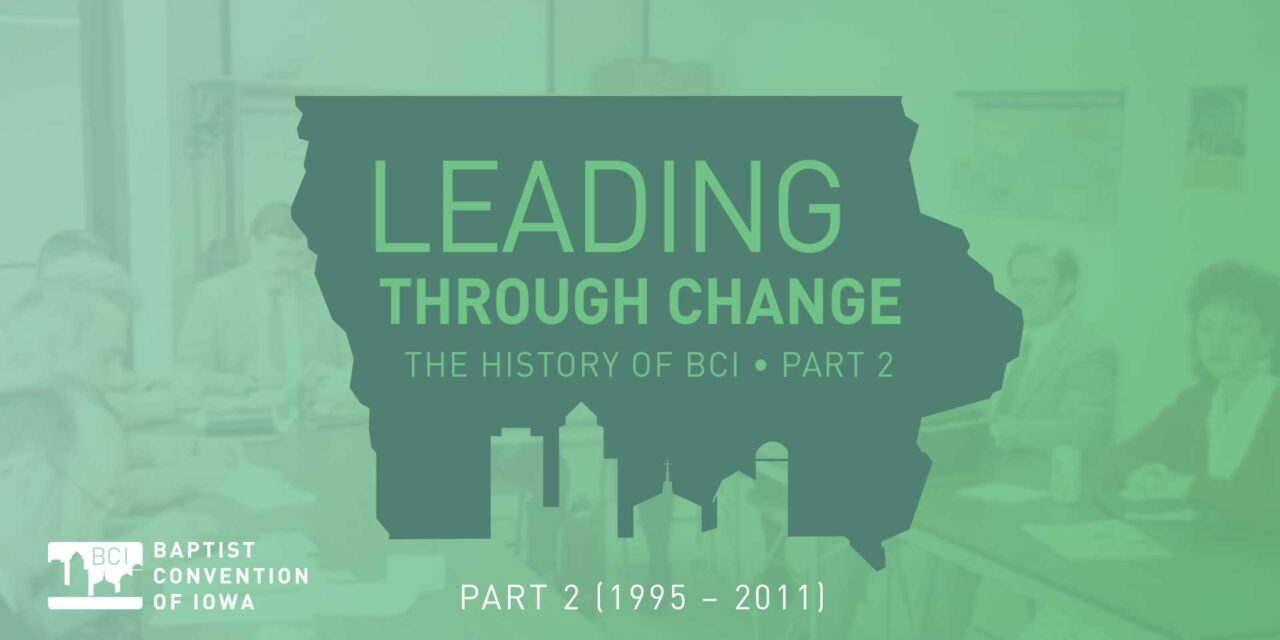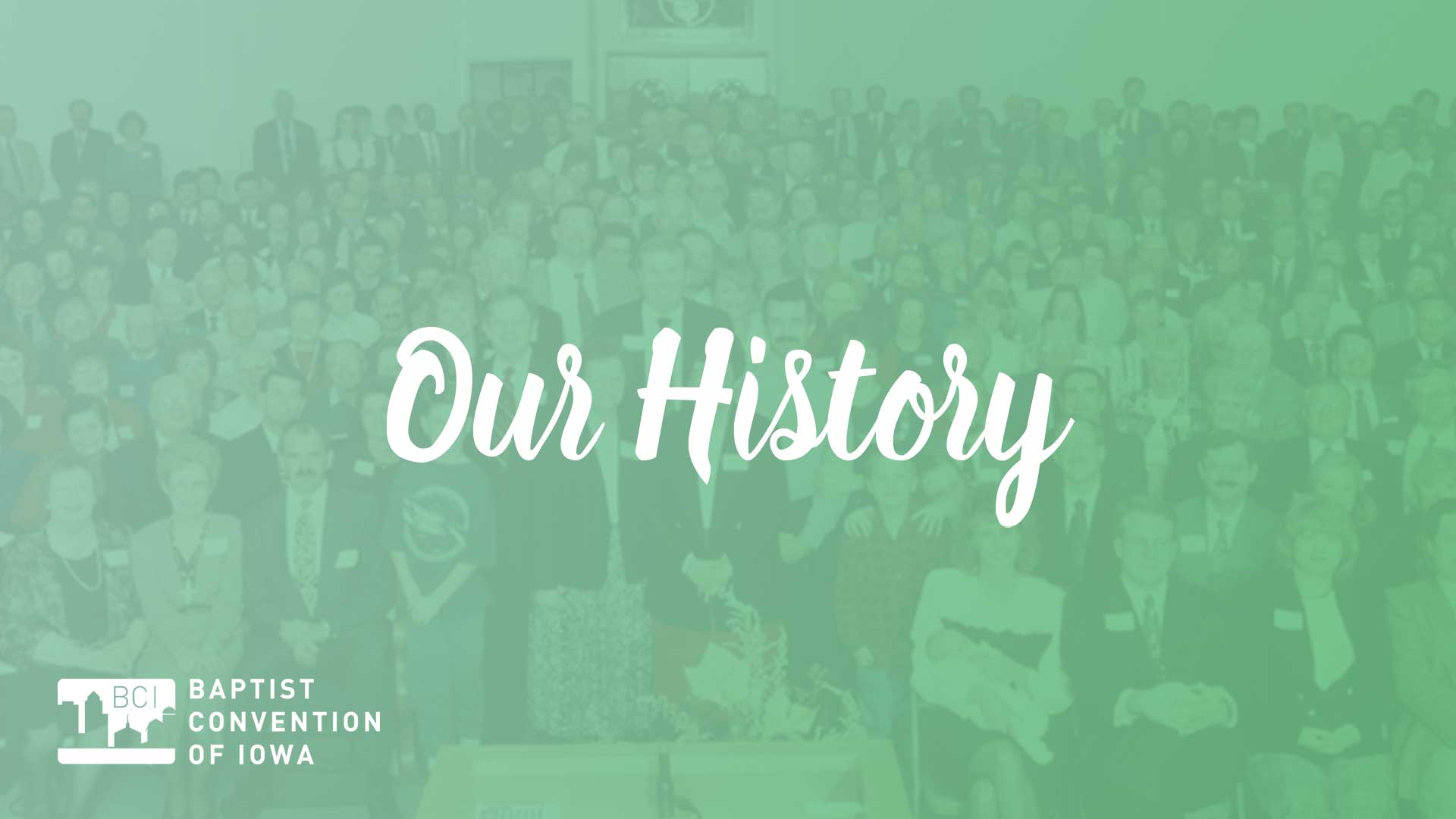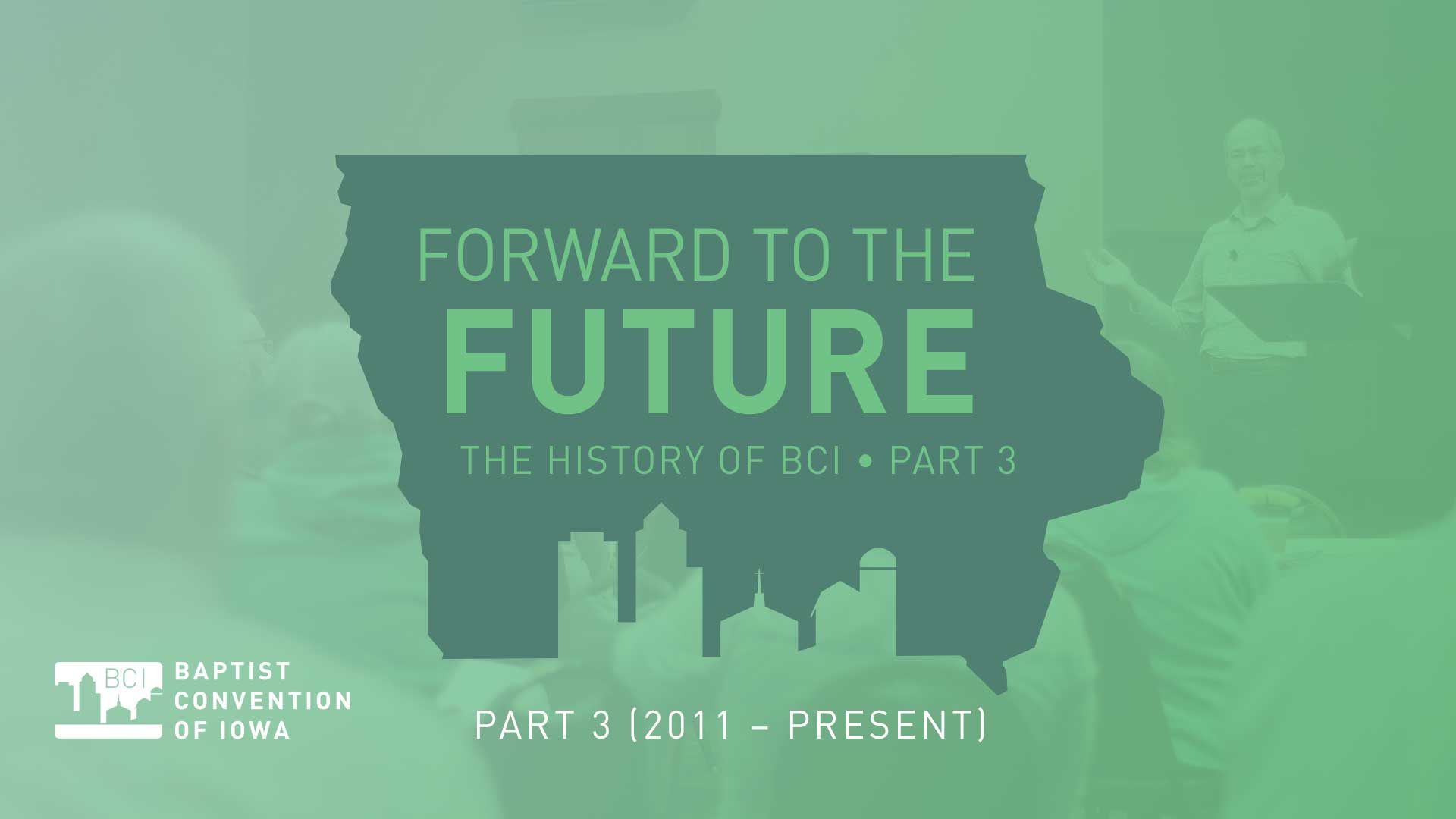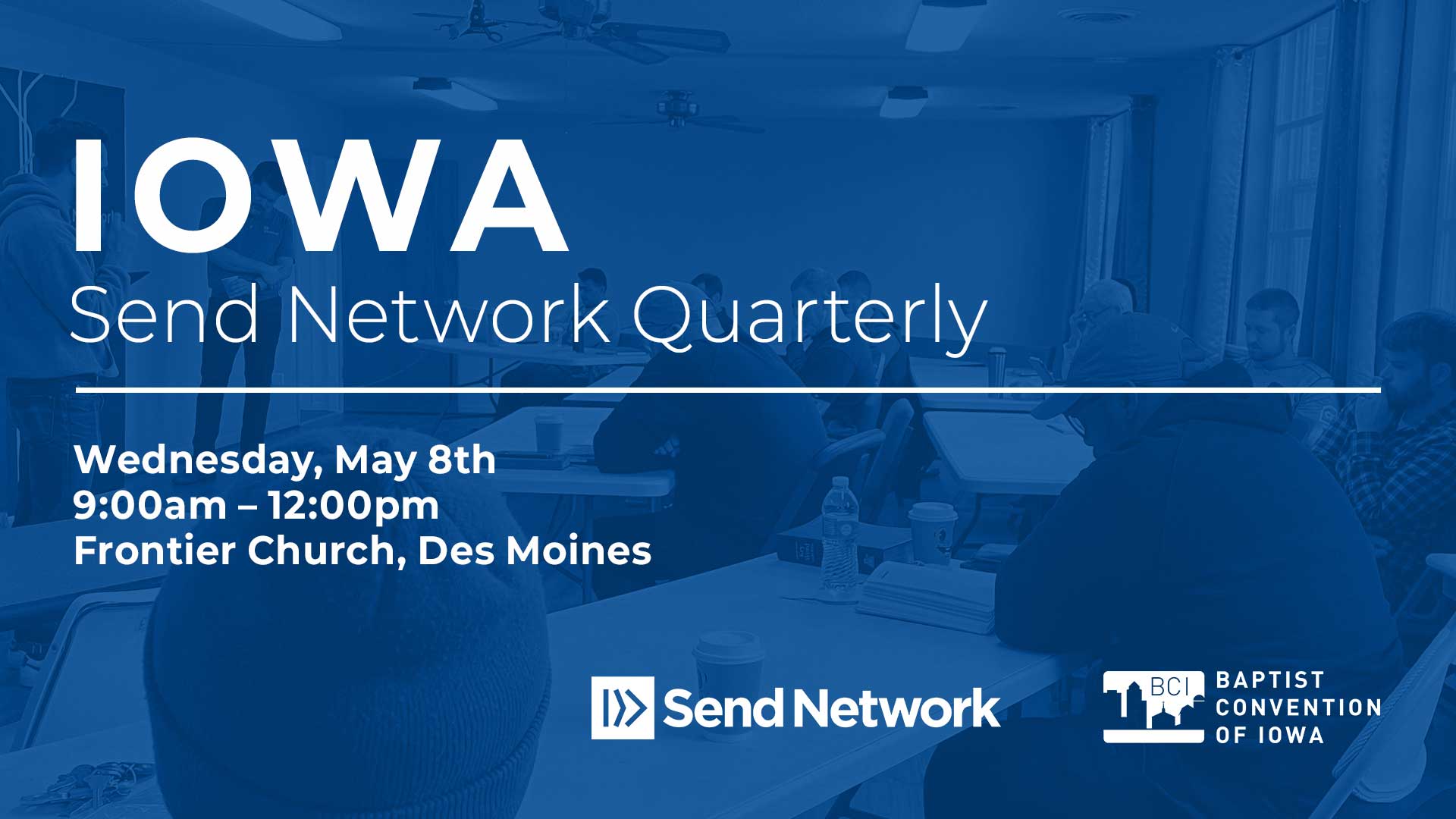THIS IS PART 2 OF A 3-PART SERIES OF ARTICLES ON THE HISTORY OF THE BAPTIST CONVENTION OF IOWA.
The first and second decades of the Baptist Convention of Iowa were characterized by growth, both in numbers of participants and in depth of cooperation. This steady growth led to the need to respond and adapt to significant changes to maintain the unity of the fellowship while pursuing the Great Commission together.
In 2020, the Baptist Convention of Iowa (BCI) celebrated 25 years of ministry as a convention in Iowa. However, that ministry was built on many more years of history that goes back well before the founding of BCI.
BCI staff and board members were called upon to lead through the changes that were happening in the local churches, in the fellowship of the convention, and in our culture at large. And they were also called upon to lead through instituting needed changes at the right time.
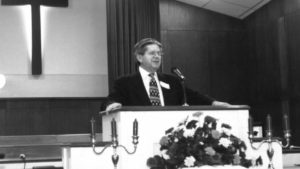 Importance of Fellowship in a Growing Convention
Importance of Fellowship in a Growing Convention
The convention grew as more churches were planted throughout Iowa under the leadership of Dr. Wyndell Jones, who served as the Executive Director from 1985 to 2001. Many of these new churches were in isolated parts of the state. For new pastors, especially the many who had moved to Iowa from the south or other parts of the country, the fellowship with other church leaders was cherished. “When I look back, I have fond memories of the camaraderie amongst the churches and leadership in the state,” said Pastor John Shaull. “There wasn’t a feeling that there were ‘big wigs’ in the room. There was an equality and value for every leader and pastor in the room. There were common values and a common desire to achieve the mission of the church.”
 When it became clear that Dr. Jones was moving toward retirement, he intentionally set about the process of finding his replacement. He was intent that the convention not be left without leadership when his tenure was over. Through the search process, one candidate rose above the others because of his history of working with and serving BCI in previous years. BCI had a close partnership with the Arkansas convention during that time and had a lot of interaction with one of their staff members.
When it became clear that Dr. Jones was moving toward retirement, he intentionally set about the process of finding his replacement. He was intent that the convention not be left without leadership when his tenure was over. Through the search process, one candidate rose above the others because of his history of working with and serving BCI in previous years. BCI had a close partnership with the Arkansas convention during that time and had a lot of interaction with one of their staff members.
“Jimmy Barrentine was on staff with the Arkansas convention,” said Pastor Shaull. “Through that partnership, the Iowa staff had gotten to know Jimmy really well and his name was on many people’s minds a long time before the official search process began. As we grew, we needed someone to unify and strengthen our fellowship and Jimmy valued cooperative leadership.”
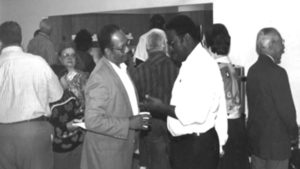 “We were a diverse fellowship when I served in Iowa,” says Former Executive Director Jimmy Barrentine. “I believe that openness of fellowship made it easier for pastors of all kinds to participate. It was not age dominated. There wasn’t a ‘young pastor group’ or an ‘old pastor group.’ The generations were sitting down together and there seemed to be no barrier between them. A lot of that may have to do with one pastor, Max Carmichael, who was always reaching out to younger pastors. There was a time early in the convention when every pastor in southern Iowa had been won to the Lord by Max. He was truly one of the unsung heroes of our convention.”
“We were a diverse fellowship when I served in Iowa,” says Former Executive Director Jimmy Barrentine. “I believe that openness of fellowship made it easier for pastors of all kinds to participate. It was not age dominated. There wasn’t a ‘young pastor group’ or an ‘old pastor group.’ The generations were sitting down together and there seemed to be no barrier between them. A lot of that may have to do with one pastor, Max Carmichael, who was always reaching out to younger pastors. There was a time early in the convention when every pastor in southern Iowa had been won to the Lord by Max. He was truly one of the unsung heroes of our convention.”
 Leading through Cooperation & Unity – Jimmy Barrentine
Leading through Cooperation & Unity – Jimmy Barrentine
After a thorough search process, Jimmy Barrentine was hired as the second full-time BCI Executive Director/Treasurer from 2001 to 2011. Barrentine had pastored a church in Texas before he and Joan went into missions work full-time. They served with the IMB in the South American country of Paraguay, where their daughter Jenifer was born. “Although my title was ‘Executive Director/Treasurer,’ my understanding of God’s call on my life is that I was a missionary to the people of Iowa,” said Barrentine. “That call to mission was the reason I decided to leave the Arkansas convention, which, to be honest, provided more advantages to our family.”
By all accounts, Barrentine’s leadership exemplified cooperation and servant leadership. He demonstrated this personally by his willingness to get down in the trenches and do the hard work of ministry next to pastors and other leaders. “There was no task that was ‘below’ Jimmy,” said Pastor Mike Carlson. “He would help out doing the grunt work of Disaster Relief. I was president of the convention when Dr. Jones retired and Jimmy came in and they were both great leaders who provided the kind of leadership that was needed at that time. Prior to coming to Iowa, Jimmy had declined several executive director positions at other state conventions. He said that the only place he considered going to was Iowa.”
“He was people and connection oriented,” said Pastor Shaull. “Whether you pastored a church of 50 or 500, you were equally valuable. Jimmy’s leadership style was integrative, and he was quick to entrust responsibility to others. He would often say, ‘If you need my help, let me know.’ As we developed more mature leadership across the state, we needed to develop cooperation to achieve our goals.”
 “Jimmy was a strong leader who led through consensus,” said Pastor Carlson. “He helped bring a lot of people together. He was quiet and introverted but invited a lot of people to get to know him. He was a very gracious guy and had a tender heart.”
“Jimmy was a strong leader who led through consensus,” said Pastor Carlson. “He helped bring a lot of people together. He was quiet and introverted but invited a lot of people to get to know him. He was a very gracious guy and had a tender heart.”
“When I arrived, I found a warm fellowship among the churches. Good, kind people,” said Barrentine. “They had a firm commitment to keep the churches strong. What we did not have was a real drive to start new churches where they are needed. We needed to learn to work with other churches that are preaching the gospel in Iowa communities, even if they were not SBC. There was at all times among the convention an intense desire to see more people in heaven and fewer people in hell and an understanding that evangelism was central to the mission.”
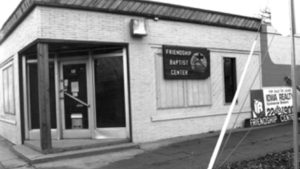 Missions, Both Local & Global
Missions, Both Local & Global
Thanks to his background serving as both a pastor and a missionary, Barrentine was able to help the convention grow in missions, both local and international. One key area of mission that Barrentine was instrumental in developing was the BCI Foundation. The Foundation was developed to facilitate cooperation in funding various missions programs and processes. The Iowa Missions Offering and the Iowa Ministry Fund are current processes that leverage the BCI Foundation to accelerate community transformation ministries. Another key area of development were ministries serving in vulnerable communities in Iowa, such as The Baptist Friendship Center, now called the Friendship Center, in the MLK neighborhood in Des Moines.
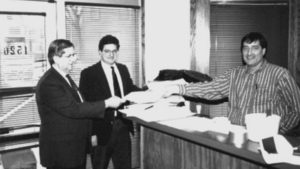 “I remember lots of churches partnering together in 1982 to start the Friendship Center in Des Moines,” said Pastor Shaull. “The idea originated with Dan Cookson who had a desire for ministry in the inner city. Dan had established relationships all over the state, and even out of state, where he could get food and supplies to distribute to people in need.”
“I remember lots of churches partnering together in 1982 to start the Friendship Center in Des Moines,” said Pastor Shaull. “The idea originated with Dan Cookson who had a desire for ministry in the inner city. Dan had established relationships all over the state, and even out of state, where he could get food and supplies to distribute to people in need.”
“As the churches were strengthened, there was a growing awareness of the need to invest in transformational ministries that genuinely helped people grow in the Lord,” said Barrentine. “The measure of the ministry is whether those who are in a church are transformed in their lives. We wanted to see tangible results that demonstrated that Jesus changes hearts, minds, and lives. ”
Jon and Mindy Jamison served as directors of the Friendship Center from 1991 to 2017. During their tenure, the ministry broadened its scope and transitioned to not just meeting needs but also helping families meet their own needs through training, classes, and other kinds of support. Their goal was to go beyond meeting immediate needs to seeing transformation in the community,” said Barrentine. “And the Friendship Center was just a piece of what the churches were doing in Iowa in community transformation. Individual churches began to develop vital ministries to impoverished communities and to see lives changed. For example, Carter Lake Baptist Church would give away cars, help people find jobs, and help them find housing. Churches were interested in changing whole lives with the gospel alongside practical help. By and large, this was not a top-down, centralized effort. It happened quietly around the state in each church.
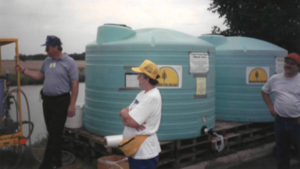 Relief in Times of Disaster
Relief in Times of Disaster
After Iowa suffered a major flooding disaster in 1993, there was a desire to start a disaster relief ministry. Thus, the Iowa Disaster Relief (Iowa DR) ministry was launched in the late 1990s with the aid of several other state conventions, especially Tennessee. Over the next 10 years, Iowa DR served after many hurricanes in the south. Iowa DR leaders like Ty Berry and Frank McCrary launched new training events and rallied volunteers to respond to various disasters. For many years, BCI operated a ‘feeding unit’ to provide meals to disaster victims and relief volunteers, which was hosted by New Bridge Church in Winterset.
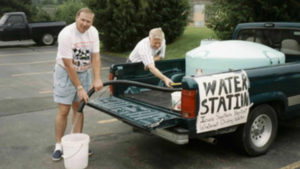 “When Jimmy was in Arkansas, he led their Disaster Relief department and that was one primary way we got to know him,” said Pastor Carlson. “Iowa DR really got going under his tenure. Not only was he very supportive of Iowa DR, but he was also very involved with it personally.” Pastor Mike Carlson and his wife Shari were involved in Disaster Relief since the beginning and served together as Disaster Relief Directors for 3 years. Pastor Carlson was the first Iowa DR chaplain and his first service as chaplain was during hurricane Charlie (2004). “Hurricane Katrina (2005) was the biggest disaster where Iowa DR served. We also helped with the tornadoes in Parkersburg (2008) and Joplin (2011). There were about 10 years that Iowa DR was extremely active, and we partnered with about every other state convention.” For the last 5 or 10 years, Iowa DR activity has declined as many of the most involved volunteers and leaders have begun aging out. Currently, our Iowa DR focus is on partnering with larger conventions around us who have greater capacity, like Illinois and Missouri.
“When Jimmy was in Arkansas, he led their Disaster Relief department and that was one primary way we got to know him,” said Pastor Carlson. “Iowa DR really got going under his tenure. Not only was he very supportive of Iowa DR, but he was also very involved with it personally.” Pastor Mike Carlson and his wife Shari were involved in Disaster Relief since the beginning and served together as Disaster Relief Directors for 3 years. Pastor Carlson was the first Iowa DR chaplain and his first service as chaplain was during hurricane Charlie (2004). “Hurricane Katrina (2005) was the biggest disaster where Iowa DR served. We also helped with the tornadoes in Parkersburg (2008) and Joplin (2011). There were about 10 years that Iowa DR was extremely active, and we partnered with about every other state convention.” For the last 5 or 10 years, Iowa DR activity has declined as many of the most involved volunteers and leaders have begun aging out. Currently, our Iowa DR focus is on partnering with larger conventions around us who have greater capacity, like Illinois and Missouri.
 Ever Increasing Change
Ever Increasing Change
Although we had strong leadership to respond to the changes that had occurred, still more change was needed. As our culture changes at an exponential rate, the level of change that was required was stretching the cooperation of church leaders. “Those who served before me weren’t always able to do what they really wanted to do because of how the convention was structured, first as an association of Missouri, then as a fellowship in Iowa,” said Barrentine. “What was needed was the development of a uniquely Iowan way of doing ministry and that wasn’t always open to us due to our reliance on other organizations. The transition to full autonomy was ongoing when I arrived on the scene. Eventually, we were able to take some steps forward to change the way that the convention related to churches. For example, church planting had always been done by the convention. This changed dramatically when NAMB underwent a major restructuring and many of the previous funding channels were cut off. There was a growing realization that the churches are the ones who should be starting churches. Tim Lubinus in his role at Cornerstone Church of Ames was one of the leaders that was voicing this concern, which also coincided with my own view of ministry that the state convention should serve from the back of the room, with the pastors and churches up front.”
In addition to changing how BCI approached church planting, eventually leaders made other critical decisions to fundamentally change how BCI operated. They voted to sell the building and to restructure the BCI staff team. These were not easy things to do but innovative solutions were needed as the strategies that worked 20 or even 10 years before were no longer effective. Indeed, the time has come when no two churches are the same. Even in our relatively small convention, in a relatively homogeneous culture, each church is fully autonomous and leaders desire to pursue the Great Commission in a unique way that works for them.
The challenge that lay ahead is one of maintaining the gospel-centered brotherhood of fellowship while striving to fulfill the Great Commission with as much fruitful ministry as possible. These two values often exist in tension, but the opportunity now is to elevate both values simultaneously through innovative ministry and humble cooperation with those God has called to minister in our churches.
The Care and Concern of the Fellowship
During much of the nine years they lived in Iowa, Jimmy and Joan Barrentine’s daughter Jenifer was stricken with a debilitating disease. Jenifer spent much of the time in a paraplegic state with Joan as her full-time nurse. “Jenifer had been diagnosed as terminally ill and was confined to a wheelchair and unable to speak,” said Barrentine. “The pastors were so understanding. They allowed us to spend a lot of time with her and were very gracious in regard to our need of taking care of Jenifer before they eventually diagnosed the exotic virus and began effective treatment. Mayo Clinic rarely uses the term ‘miracle’ but that’s how they described her recovery. She still has residual pain, but she now enjoys outdoor activities, hiking, and ziplining. We were touched by the spirit of the people of Iowa. They laughed with us, they cried with us, and they allowed us to participate in their lives and for that, we will always be grateful.”
“I am most grateful that, as our time in Iowa came to a close, we were seeing more churches growing and more church plants surviving,” said Barrentine. “Iowa is not the place to go if you are seeking the spotlight. But it is the place to go if you want to give yourself daily in ministry. It’s a place for someone with a servant’s heart who will think less of himself and more of His God. And if they do so, by God’s grace, people will listen to the gospel message.”

